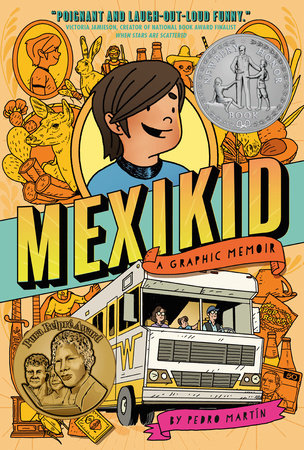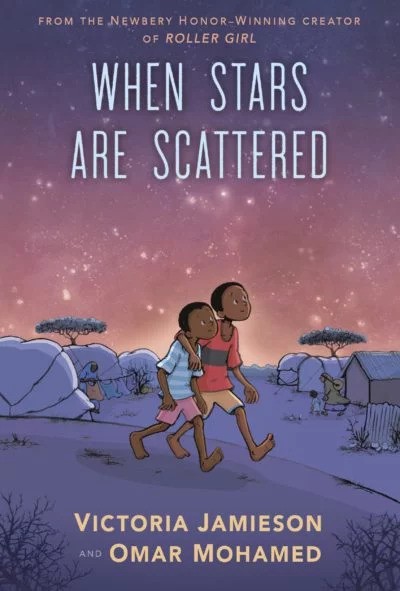By Julia López-Robertson, University of South Carolina, Melissa Summer Wells, University of Mary Washington & Jennifer D. Morrison, Sam Houston State University
 In our last blog we introduced you to graphic novels and provided a model for applying critical reading and critical literacy to When Stars Are Scattered (Jamieson & Mohamed, 2020). This blog focuses on the Pura Belpré Award winner, Mexikid (Martín, 2023). Mexikid is a memoir about a Mexican American boy named Pedro and his family’s journey to bring their abuelito from Mexico to live with them in the United States. Pedro is the seventh of nine children; the older five were born in Mexico, while Pedro and his three younger siblings were born in the U.S. and, according to the older siblings, are “not Mexican enough.” The family embarks on a 2,000-mile road trip to Mexico, encountering many adventures along the way. While the older siblings drive a pick-up truck, Pedro and his younger siblings travel with their parents in a used Winnebago. Throughout the journey, Pedro hears stories about his family—particularly his abuelo—and learns about his Mexican heritage and family history. In what follows we will discuss our purposes for engaging students with graphic novels and speak specifically about Mexikid. Continue reading
In our last blog we introduced you to graphic novels and provided a model for applying critical reading and critical literacy to When Stars Are Scattered (Jamieson & Mohamed, 2020). This blog focuses on the Pura Belpré Award winner, Mexikid (Martín, 2023). Mexikid is a memoir about a Mexican American boy named Pedro and his family’s journey to bring their abuelito from Mexico to live with them in the United States. Pedro is the seventh of nine children; the older five were born in Mexico, while Pedro and his three younger siblings were born in the U.S. and, according to the older siblings, are “not Mexican enough.” The family embarks on a 2,000-mile road trip to Mexico, encountering many adventures along the way. While the older siblings drive a pick-up truck, Pedro and his younger siblings travel with their parents in a used Winnebago. Throughout the journey, Pedro hears stories about his family—particularly his abuelo—and learns about his Mexican heritage and family history. In what follows we will discuss our purposes for engaging students with graphic novels and speak specifically about Mexikid. Continue reading


